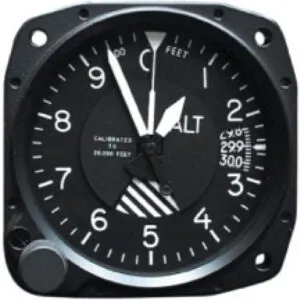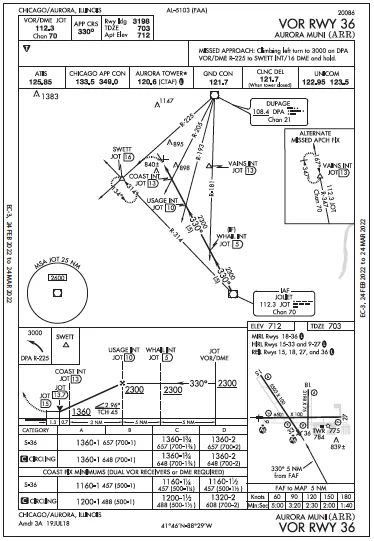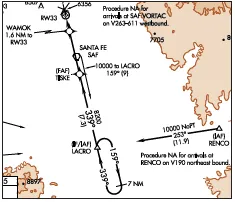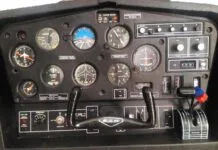Go? Or No-Go?
I read with interest your “Go? Or No-Go?” Remarks in the September 2022 issue, where you analyzed that choice in light of a failed aux-tank fuel pump, without which you could complete your trip. If you can test the system, as you’re doing, without solely relying on it in such a way that you always have safer harbor, it’s a go.
This is like turning circles for an hour 1500 feet over the pattern in order to burn in a new or remanufactured engine. It’s essentially a nearly risk-free way to put a burden or load on what you’re testing while performing the test over a safety net in case things get interesting.
Like you, I would go.
Dan Anderson
[Location withheld from e-mail]
No SBAS in the UK
I was recently talking with a British friend who’s also a pilot. He mentioned that due to BREXIT, and lack of agreement between the UK and EU on using EGNOS (European SBAS), approaches to LPV mins have been withdrawn. The SBAS signal is still there (obviously) but LPV lines of minimums have been removed from approach charts.
Luca Bencini-Tibo
Weston, Florida
Does a HILPT Count?
The regulations for maintaining instrument currency (§61.57) are clear enough about the six approaches in six months. But for the required hold, can a hold in lieu of procedure turn (HILPT) be counted for the one hold in six months? I practice standard one-minute holds. I understand needing to remember how to do that maneuver that is used so little these days.
After a practice approach that includes a HILPT course reversal, I wonder if I can also put a check mark in my log book next to “Hold” and count that as my one hold in six months. Your opinion?
Jim Brewer
Myakka City, Florida
We haven’t specifically researched this. That said, a hold is a hold, no matter whether 10 turns are required in it or it’s just used to turn around. Since the official name is hold in lieu of procedure turn, we’re comfortable saying we executed a hold and logging it as such.
Altimeter Agreement
In the July 2022 issue under “READBACK” the editor responds to a letter about altimeters and he mentions cross checking two altimeters in the cockpit with field elevation.
While the Part 91 world might allow each altimeter to be off from field elevation by 75 feet in opposite directions to each other, in Part 121, and with aircraft manufacturer limits and Ops Specs, the limits can be much more restrictive. Our ABX B-767 has in-flight and on-the-ground limits. On the ground, they must be within 75 feet of field elevation, but also must be within 40 feet of each other at SL, 45 feet at 5000 feet, or a maximum difference of 50 feet at 10,000 feet. On top of all that, in flight the maximum difference between the altimeters is 200 feet.
David Morton
Ponte Vedra, Florida
 Yes, that response was to a READBACK thread from previous issues and related to Part 91 flying. In Part 121, as you suggest, the limits are airline and aircraft specific as different carriers and different aircraft have different limits. The important point, though, is that in the 121 world, there are agreement requirements that simply don’t exist in Part 91 flying, so long as the altimeters are within 75 feet of the ground.
Yes, that response was to a READBACK thread from previous issues and related to Part 91 flying. In Part 121, as you suggest, the limits are airline and aircraft specific as different carriers and different aircraft have different limits. The important point, though, is that in the 121 world, there are agreement requirements that simply don’t exist in Part 91 flying, so long as the altimeters are within 75 feet of the ground.
More on KARR … Again
I might have some additional—and relevant—information to shed light on the KARR VOR 36 approach that has was the topic in the July 2022 issue, and prompted a letter published in the October issue.
Back in the Early Pleistocene Era, back when you and I learned to fly, KARR only had two runways: 9-27 and 18-36. When the TERPSters were laying out approaches to KARR back then, they put an ILS on Runway 9, since it was (and still is) the longest runway. For reasons that are forever lost in the mists of time, they (or the city fathers?) didn’t put the ILS on Runway 27, which is more-or-less lined up with prevailing winds here in the Midwest. My suspicion is that it’s related to the rather complicated airspace around there, with Midway not all that far to the east, and the final approach paths for Runways 4L and 4R at O’Hare even closer in that direction.
But it’s not all that uncommon for cold winter winds to come screaming out of the north from Canada and Minnesota, making Runway 9’s ILS a difficult proposition. The FAA obliged by creating an approach to the perpendicular runway, 18-36. At 3198 feet of runway length, an ILS was out of the question (and too expensive for what was then a not-very-busy airport), so they next looked at nearby VOR stations to use.
JOT was only 15 miles away, and DPA was even closer, but neither one lined up with either runway at KARR. They picked JOT. In one of those happy coincidences, the final approach course from JOT and Runway 36 are just barely within the 30-degree allowance for straight-in minimums, so we got S-36 minimums instead of a circling-only approach. And, yes, that means a rather significant dog-leg turn on short final if the visibility is near the one-mile minimum for the approach.
[Cue the March of Progress music.]
Decades later, the Powers That Be at the City of Aurora decided a longer north/south (ish) runway would be A Good Thing. They soon made two discoveries: 1) Runway 18-36 was land-locked at both ends, but 2) there was room to expand to the northwest. I’m not aware of whether this new runway, which became 15-33, was laid out on purpose or just accidentally happened to be lined up with the 330-degree radial from JOT VOR, but it does make a landing on 33 from the VOR 36 approach very easy.
Looking to the future, I’ll also point out there’s a LOC approach to Runway 33. Meanwhile, the City of Aurora hasn’t exactly spent a lot of money maintaining Runway 18-36; it has long cracks in the tarmac with weeds growing out of them. Which makes me wonder which of two futures is in store for that VOR 36 approach: rename the approach to VOR Rwy 33, or cancel the whole approach and abandon Runway 18-36.
Tom Skelton
Mason, Michigan
Tom, thanks for that well-written and amusing history about what has become now a rather perplexing arrangement.

Errata
Our August 2022 quiz about altimeters had a few errors. It seems that our quizmeister lost sight of “High to low, look out below” in crafting the questions and answers. We apologize for the errors. Meanwhile, we’ve purchased books, videos, and in-person training for our quizmeister.





